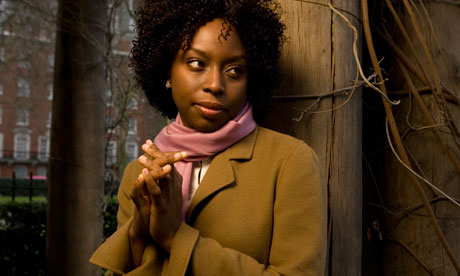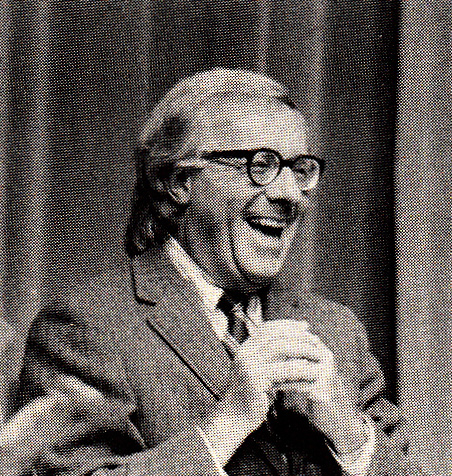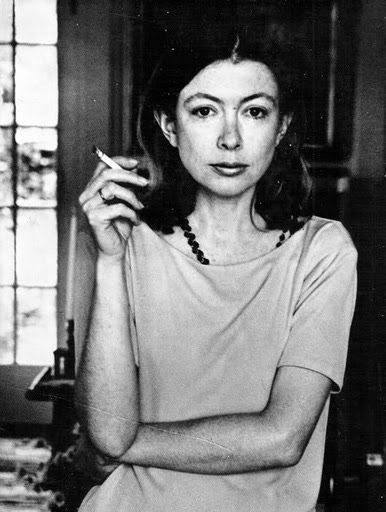 The year belonged to Fifty Shades Of Grey. Dominating bestseller lists, the return of
erotic fiction saw publishers releasing a slew of copycat titles. Christian
Grey and Anastasia Steele’s tie me up, tie me down romance was as huge with
Kiwi readers as it was across the rest of the western world where it outsold
even Harry Potter. Word is author EL James is hoping for a cameo in the
upcoming screen version and in the meantime is working on some new love
stories.
The year belonged to Fifty Shades Of Grey. Dominating bestseller lists, the return of
erotic fiction saw publishers releasing a slew of copycat titles. Christian
Grey and Anastasia Steele’s tie me up, tie me down romance was as huge with
Kiwi readers as it was across the rest of the western world where it outsold
even Harry Potter. Word is author EL James is hoping for a cameo in the
upcoming screen version and in the meantime is working on some new love
stories.
The rest of the buzz went to bigger, more
established names. Marian Keyes published The
Mystery Of Mercy Close, her first novel in three years following her epic
battle with depression; JK Rowling released The
Casual Vacancy, her first adult, non-Potter fiction to mixed reviews and
substantially more modest sales; Ian McEwan’s Sweet Tooth garnered rave
reviews, and Hilary Mantel scooped the Booker Prize for the second time with Bring Up The Bodies, the sequel to her
previous winner Wolf Hall.
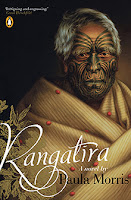 Here in New Zealand the biggest fuss
surrounded Emily Perkins skilfully constructed piece of Virginia Woolf fan
fiction, The Forrests, and the
country’s premier literary prize for fiction went to Paula Morris’ Rangatira.
Here in New Zealand the biggest fuss
surrounded Emily Perkins skilfully constructed piece of Virginia Woolf fan
fiction, The Forrests, and the
country’s premier literary prize for fiction went to Paula Morris’ Rangatira.
My pick of the year’s best is hardly
exhaustive. Hundreds and thousands of titles have been released without me
glancing within their pages. But I have read and reviewed fifty plus books on these pages and this is my selection of the standouts - the novels that
thrilled, delighted and gripped me over the course of 2012. I’m prepared to
stick my neck out and say you’ll find them great reading too.
Merivel: A Man Of His Time by Rose Tremain (Chatto & Windus, $37.99)
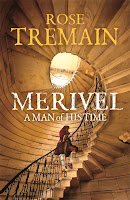 A comic and soulful novel that is UK author
Tremain’s long-awaited follow up to her bestseller of more than 20 years ago, Restoration. When we are reacquainted
with 17th century physician Robert Merivel he is aged, melancholy
and struggling to find a purpose for his existence. Fortunately his adventures
are far from over. This picaresque tale sees our hero travelling to the French
court in Versailles, falling in love, adopting a bear and being challenged to a
duel.
A comic and soulful novel that is UK author
Tremain’s long-awaited follow up to her bestseller of more than 20 years ago, Restoration. When we are reacquainted
with 17th century physician Robert Merivel he is aged, melancholy
and struggling to find a purpose for his existence. Fortunately his adventures
are far from over. This picaresque tale sees our hero travelling to the French
court in Versailles, falling in love, adopting a bear and being challenged to a
duel.
Merivel is a delightful literary creation -
vain, ridiculous and yet entirely lovable, and this amusing, thoughtful story
with its consistently genius writing is my pick for book of the year.
The Rook by Daniel O’Malley (HarperCollins,
$36.99)
A hilarious and original supernatural
thriller that had me hooked from the very first page. It is the story of
Myfanwy Thomas who wakes up in a London park with no idea who she is and a note
in her pocket that reads: “Dear you, the body that you are wearing used to be
mine…” Myfanwy soon discovers a few crucial things. The first that she is a top
operative for a secret government agency charged with safeguarding the world
from supernatural threats; and the second that someone is trying to kill her.
Armed only with the information she finds in letters that have been left for
her, Myfanwy is plunged into an extraordinary world. A spoofy, inventive story,
that’s entirely bonkers in places. I completely loved it.
Skylark by Jenny
Pattrick (Black Swan, $37.99)
Skillfully
blending history and fiction, this is Kiwi author Pattrick’s seventh novel and
her most entertaining yet. Set in the mid-to-late 1800s, its heroine is the
irrepressible Lily Alouette, the daughter of French street acrobats who die
trying their luck on the Australian goldfields. Lily survives by becoming a
performer in New Zealand’s fledgling entertainment industry, moving from circus
to theatre and falling in love with a handsome horseman along the way.
Pattrick weaves
many real figures and events into her story, but this is a novel that wears its
research lightly and the voice of the irrepressible Lily makes it a joy to read
despite the setbacks and tragedies of her life. A winner of a book from one of
the country’s most talented storytellers.
The Snow
Child by Eowyn Ivey (Headline, $34.99)
A
whimsical fairytale set in 1920s Alaska. Jack and Mable, a childless
middle-aged couple, have decided to make a new start in the wilderness. Life is
hard and lonely. When the first snow falls the couple build a snow girl,
decorating it in mittens and a scarf. The next morning they wake to find the
snow girl gone and a childish figure running through the trees, wearing the
scarf. Is she real? Are they imagining her? The story has an ethereal quality,
and Ivey creates lingering doubts. But gradually the snow child comes closer
and they learn her name and something of her story.
Based on
a Russian folk tale, this is a magical novel written in shiveringly good prose,
with emotional depth and grit to balance out its feyness.
Red Ruby
Heart In A Cold Blue Sea by Morgan Callan Rogers (Text, $37)
A wise
and wonderful coming-of-age story with a mystery at its core and a flawed,
feisty heroine. In 1960s Maine, Florine Gilbert is enjoying an idyllic
childhood when her mother disappears without a trace while on holiday.
Struggling with grief and the tortures of adolescence, Florine makes her share
of mistakes, and suffers more setbacks and losses, battling her way through all
of it. This is no depressing read but a warm, engaging novel peopled by
memorable characters and it’s not difficult to get lost in its pages. A
late-in-life fictional debut for its author Callan Rogers who is 60, the
emotional maturity shines through from start to finish. Gorgeous reading.
Nine
Days by Toni Jordan (Text, $37)
Aussie
writer Jordan’s third novel is a departure from her previous sassy, humorous
work. Inspired by a wartime photograph of a woman kissing her sweetheart
goodbye at Melbourne railway station, Jordan has constructed a story around
several generations of a working class family, telling of one day in each of
their lives. It opens in 1939 with Australia on the brink of war and young Kip
Westaway forced to leave school to help support the family following the death
of his father. The novel reaches the present day, but the chapters skip
backwards and forwards between the generations so the reader has to piece
things together and work out the connections between each person.
Cleverly
crafted and tightly written, with a central message about the fragility of life,
this novel is deeply sad at times but leavened with brightness and wit.
With a strong social message, this is
award-wining US author Kingsolvers’ most accessible book yet. It’s the story of
dirt poor Tennessee farmer’s wife Dellarobia Turnbow who witnesses what appears
to be a miracle on the mountain above her home – the fir trees are blazing and
sparking with orange. Rather than a vision, this turns out to be a sign
something is out of kilter with the environment. The fir trees are full of
monarch butterflies that ought to be over-wintering in Mexico rather than the
Appalachian mountains. As word of the phenomenon spreads, Dellarobia becomes a
minor celebrity and scientists arrive on the hard-scrabble farm, filling her
head with ideas and opening up new possibilities.
There are times when the science overwhelms
the story, but for the most part Kingsolver’s sermon on climate change is an
involving and powerful read. She writes brilliant, beautiful prose and has a
finely tuned sense of people and place. Memorable.
Gone Girl by Gillian Flynn (W&N,
$39.99)
The creepiest, most cunning and chillingly
sinister story yet about a relationship breaking down. Handsome Nick Dunne and
his beautiful wife Amy are celebrating their fifth wedding anniversary and Amy
has organised their traditional treasure hunt. But that evening when he gets
home, Nick finds the front door open, signs of a struggle and his wife missing.
As the days go by with no news of her, he becomes the main suspect with every
clue the police find seeming to point his way. But did he really do it? Flynn
strings along her readers ingeniously and there is a huge twist in the tale
when we discover who isn’t telling the truth.
Flynn has a disturbing understanding of the
darker human sides of human emotion and a talent for suspense. This is her
third novel and definitely her best yet.
Mr Penumbra’s 24-Hour Bookstore (Text, $37)
A gem of a book fusing the romance of musty
old bookstores with the brave new digital world. Clay Jannon is a San Francisco
web designer left jobless by the recession. He lands a position as the night
clerk in a curious second-hand bookshop run by the enigmatic Mr Penumbra who
instructs him to stay away from the odd volumes that line the tall shelves at
the back of the shop. Of course, Clay can’t help taking a peek. And along with
a posse of successful, eccentric friends he embarks on a quest to solve the
mystery behind the bookshop that takes him to the forefront of what technology
can offer as well as right to the heart of a centuries old puzzle.
A quirky, fizzy
read that’s a little self-conscious about its cleverness but amusing enough to
make up for it.
Dinner
At Rose’s by Danielle Hawkins (A&U, $35)
Chick
lit doesn’t usually make it into anyone’s “best of” lists but I’m breaking the
unwritten rule for this one because it's a spirited and very Kiwi book written
with energy and lots of love. Set in a fictional King Country town it's the
story of physiotherapist Jo Connelly who has fled back to her hometown to
escape the ruins of a relationship. Between her eccentric Aunt Rose and her
childhood mate, hunky dairy farmer Matt, there’s plenty to keep her busy. A
classic will they, won’t they romance develops between Jo and Matt but what
lifts this book above the rest is its heart and humour. With a wonderful cast
of rural Kiwi characters, plenty of pathos and loads of funny banter this is a
reader-pleaser of a debut for Otorohanga vet Hawkins.









